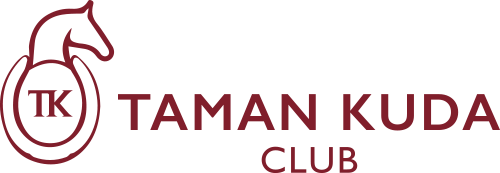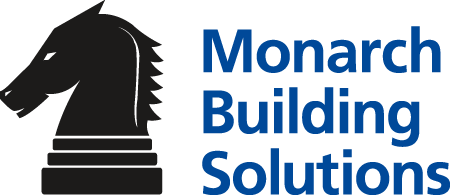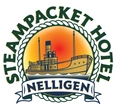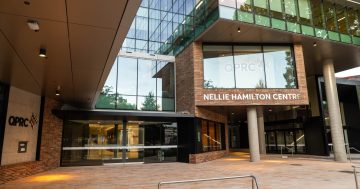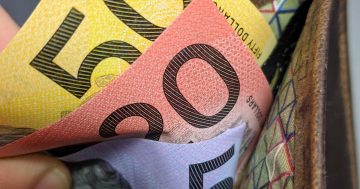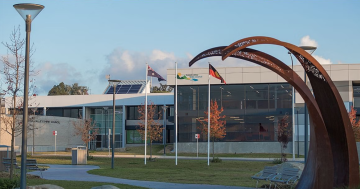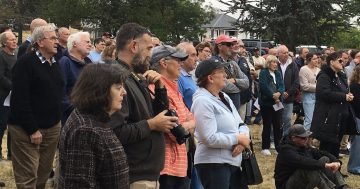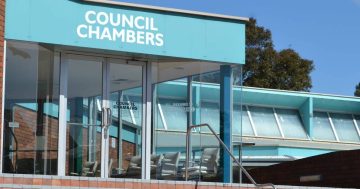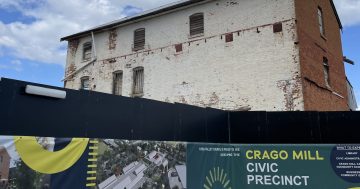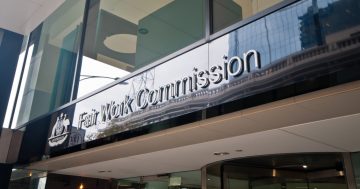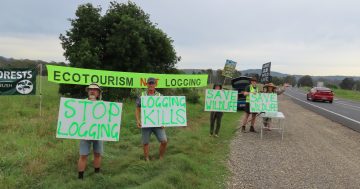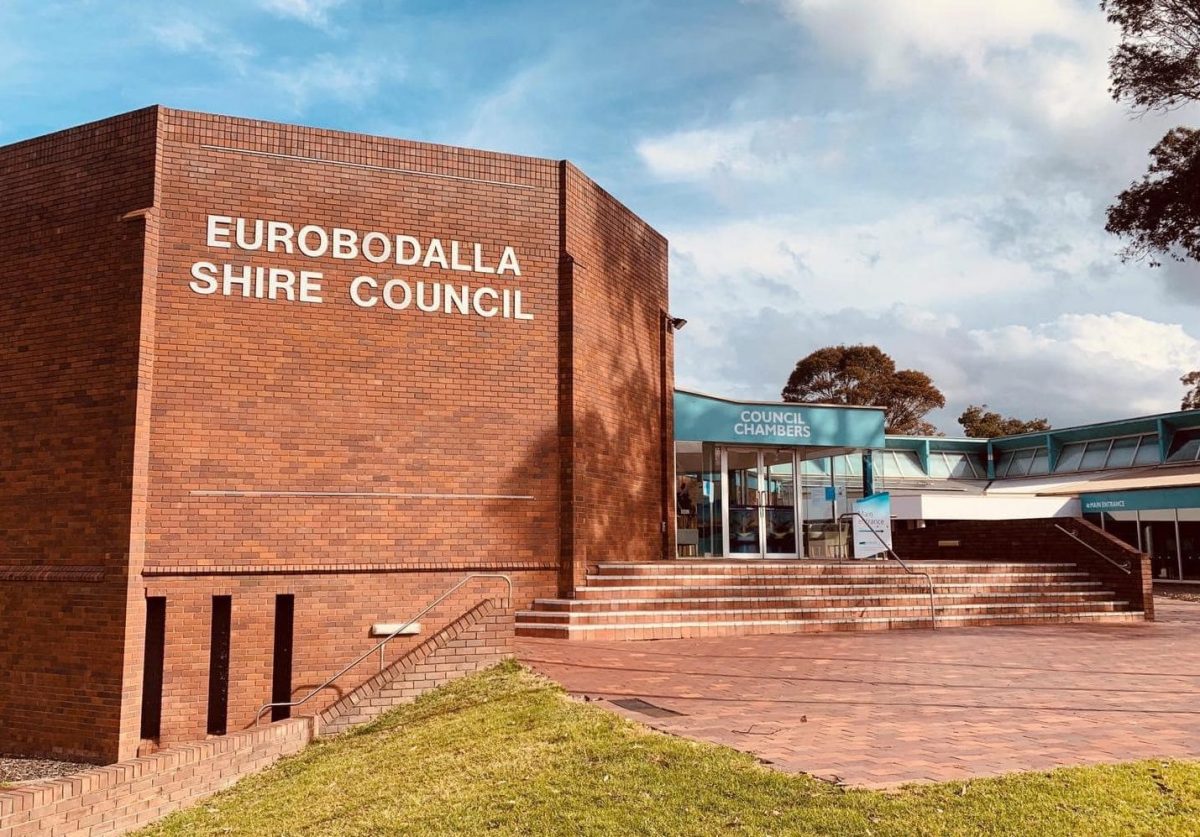
Eurobodalla Shire’s ratepayers face a 4.1 per cent increase in rates while councillors will receive a 3 per cent increase in mayoral and councillor fees. Photo: Eurobodalla Shire Council.
Eurobodalla Shire Council has approved a 4.1 per cent increase in general rates for the 2025-26 financial year that starts on 1 July.
The increase to the annual ordinary rates and special rate (environmental levy) was in accordance with the 4 per cent core rate peg set by the Independent Pricing and Regulatory Tribunal, with a population growth factor of 0.1 per cent.
The council voted to increase several other charges including waste collection, sewer access, sewer usage and the annual charge for liquid trade waste by between 4 and 4.5 per cent. The water access charge will rise by 3.85 per cent, the water usage charge by 2.44 per cent and the liquid trade waste usage charge by 2.86 per cent.
For the 2025-26 financial year council is forecasting its consolidated fund will have operating revenue of $150 million and operating expenses of $151.5 million, resulting in an operating deficit before capital of $1.5 million.
Thanks to capital income of $38.6 million, principally from grants and contributions, council will have an operating surplus of $37.1 million.
That is projected to fall to $16.4 million in 2026-27, to $15.6 million in 2027-28, and to $13.5 million in 2028-29.
Council’s 2025-26 operational plan includes $62 million spending on capital projects.
The plan, which is council’s work plan for the year, said new works included a governance framework for sustainable management and maintenance of Mogo Trail, plus a service review program that would begin with the Bay Pavilions.
Of the $150 million operating revenue, 55 per cent comes from rates and annual charges, 29 per cent from user charges and ‘other’, 12 per cent from operating grants and contributions, and 4 per cent from investment revenue.
On the other side of the balance sheet, employee costs account for 34 per cent of the $151.5 million operating expenses, depreciation 33 per cent, while ‘other costs’, including materials and contracts take up 31 per cent. Interest accounts for the remaining 2 per cent.
The operational plan contains a more illuminating diagram that shows how council spends its general rates and environmental levy. For every $100 it spends, transport costs account for nearly $38 and recreation for $27.
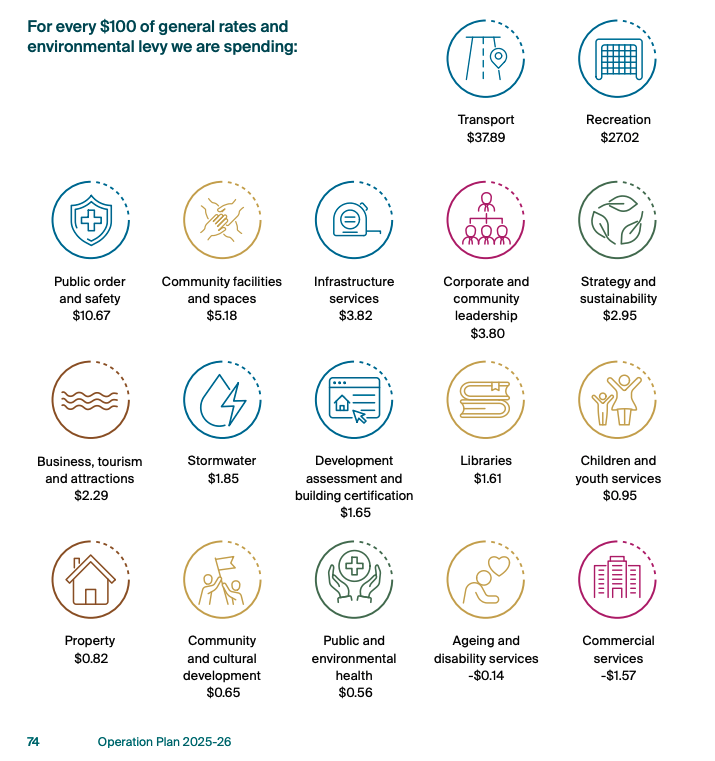
How Eurobodalla Shire Council spends general rates and the environmental levy. Photo: Eurobodalla Shire Council website.
At its recent general council meeting, the council also approved its 2025-29 Delivery Program. It outlines council’s priorities, principal activities and major infrastructure projects for the next four years.
According to the document, it was informed by ratepayers and residents, with council receiving more than 2700 contributions from across Eurobodalla.
Council’s top four priorities are housing diversity, affordability and liveability; connections between towns and villages; financial stewardship; and climate action and sustainability.
Council said by developing masterplans for Batemans Bay, Moruya and Narooma it was helping to facilitate future planning and investment. “This is to ensure that as we grow, we plan for the necessary supporting infrastructure, while protecting our natural environment, for connected, sustainable and liveable towns.”
Connections between towns and villages mainly relates to roads and pathways given the relative lack of public transport, while council will continue to deliver key items from its Climate Action Plan because “the natural environment is what you value most about Eurobodalla”.
The Delivery Program outlines seven major infrastructure projects.
It has already secured $12 million for Batemans Bay Coastal Protection Works but will need more to build the infrastructure. Council will continue to apply for grants.
Given housing is a priority, another major project is the Moruya Housing Infrastructure Project, aimed for completion in 2026. It aims to attract potential developers through building infrastructure for up to 1000 homes in areas zoned for residential development. State government and council funding of $15.92 million is currently allocated to the works.
Roundabouts at Malua Bay and South Moruya will be completed this term of council, supported by $7.3 million of federal and state funding.
The Eurobodalla Southern Water Supply Storage will be completed and commissioned during the Delivery Program’s term. It has $76.8 million of federal and state funding plus some from the council’s water fund.
Also slated for completion during council’s term is the Eurobodalla Regional Co-Located Emergency Services Precinct. Council’s contribution of $1.1 million to acquire the land is complemented by $5 million from the Federal Government.
Council is finalising plans for a new Eurobodalla Animal Shelter to replace the existing one in the Moruya Industrial Estate. It will meet state government and RSPCA standards and address community expectations for improved animal welfare. “Construction of the new facility will require the support of grant funds, which council will advocate for during this term.”
Less certain is using recycled water from the Narooma sewerage treatment plant to water sports grounds and golf courses. Council is seeking funding support to examine the project’s feasibility.
At the council meeting, the councillors voted unanimously to give themselves a 3 per cent pay rise, the maximum determined by the Local Government Remuneration Tribunal for a regional centre.



